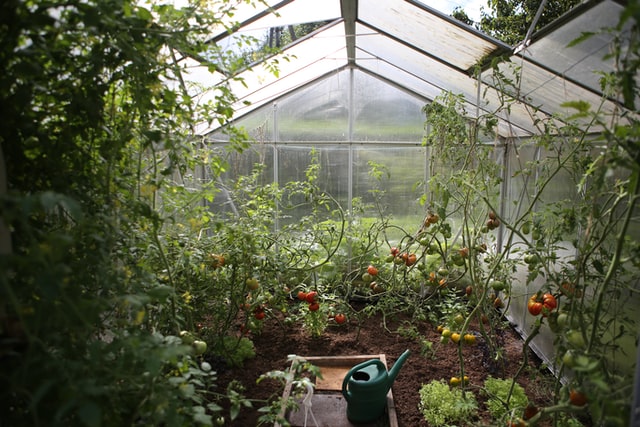 |
Intelligent irrigation: How the realization of IoT helps agriculture feed emerging economies |
From supporting the famous hydraulic civilizations of India, China, Ancient Egypt, Mesopotamia, Sri Lanka, and Pre-Columbian Mexico and Peru in the ancient past, to leading the Green Revolution in the 1960s and 1970s, irrigation has always been important. role in the agrarian economy of Asia. Even today, Asia accounts for 70% of the world’s irrigated area, but ironically majorly depends mainly on the South Asian Summer Monsoon which has a critical impact on water resources, agriculture, economy, and human mortality.
For example, the fate of India’s agricultural sector depends on the rhythm of the southwestern monsoon. More than half of the country’s net cultivated area is not irrigated and relies on rainfall. Between 55 and 60 percent of agriculture, forestry, and fishing contribute to the economy in terms of excess value-added that comes from rain-fed farms.
Sadly, these monsoons are not only erroneous but also unreliable for irrigation because areas that are not irrigated are subject to water stress resulting in loss of production, while overly irrigated areas lead to nutrient depletion and crop diseases. The associated groundwater level is essential for optimum plant growth. As water is a prerequisite element for sustenance, there is a need to prevent its improper use. Waste of unmonitored irrigation water is the highest contributing cost for the farmer through the crop production cycle.
Farmers in Asia, and, especially India, are struggling with inefficiencies in water resource management - agriculture in India is experiencing 90% water use due to the rapid monitoring of water depletion in soil and poor irrigation systems. The extent of mismanagement of irrigation resources in India can be measured from the fact that our farmers use 2-4 times more water in a particular food crop cycle compared to China or Brazil.

In fact, the agricultural sector uses up to 78% of the freshwater available in the country, the highest among other sectors (IBEF.org). As per the OECD 2050 environmental outlook, India will face severe water barriers by 2050. There is a clear need for a smart irrigation system that can provide adequate amounts of water to farms that regulates soil moisture content. According to Markets and Markets, the smart irrigation market is estimated to be USD 1 billion in 2020 and is expected to reach USD 2.1 billion in 2025, at a CAGR of 15.3%.
With the increasing acceptance of technology in all sectors, even the field of agriculture is seeing interesting innovations, including smart irrigation management systems. As observed, one of the notable advantages of IoT Based Smart Agriculture System is the ability to save water and improve yield growth. The government of India is taking various initiatives towards water conservation and proper use. To this effect, water-related data is collected by various Central and State agencies. The Central Water Commission modernizes hydro-meteorological data collection through automatic sensors, data loggers, telemetry, and real-time data acquisition and dissemination.
Let’s discuss more IoT technology and how it can enable smart farming solutions:
Precision Farming Through Resource Optimization
IoT-enabled agricultural techniques provide good tools to farmers to optimize their farming activities. These technology-driven practices are focused on increasing yield and profitability while lowering the levels of common inputs such as water, fertilizer, insecticides, and herbs that are traditionally required to grow crops. crops. Importantly, smart farming uses less to produce more.
For example, fields can be leveled by IoT-controlled lasers so that water can be applied more efficiently and there is less liquid waste running into local streams and rivers. Sensors installed on farming equipment can also collect data related to weather, soil, pests, or hydration conditions, then send that data to a centralized smart farm platform to monitor analyze and make predictable farming decisions.
Adoption of Irrigation Drones
One of the latest trends in the global market of smart irrigation systems is the increasing adoption of drones by farmers for irrigation. These smart drones are equipped with hyperspectral or thermal sensors, which can automatically identify dry areas of the field that need to be irrigated. The use of smart irrigation systems with drones can change the agricultural process for the better, allowing farmers to monitor land and assets at all times.
Smart pump systems

Depletion of groundwater creates the challenge of the supply of clean water from the borewell. Poor power supply in many villages makes it difficult for farmers to pump water from deeper borewells. Also, the water obtained thus is not clean and can damage crops. New-gen pumps are equipped to operate normally even at low voltage. There are pumps suitable for the assembly of sprinkler and drip systems in farms where the pressure can be controlled using IoT sensors. Some are still equipped with chlorination technology designed for improving the quality of water delivered by the pump.
The challenge of cost and economy of scale
While farms may be the future for smart irrigation, so far, its non-agricultural use is most common for smart irrigation devices due to the high installation cost, lack of awareness, and technical knowledge in the fields. farmers and also because Indian farmers have smaller landholdings. Sports fields and guidelines or commercial lawns are often watered with smart irrigation systems, saving water and money for landscape managers.
In short, the IoT infrastructure provides the power of sustainable agriculture with technology to transform unconnected products into connected devices that generate and analyze valuable information. The advantage of connected technologies will remain long-term because every drop of water is saved with the help of smart irrigation values for a significant contribution to global water conservation.





.png)
No comments:
Post a Comment